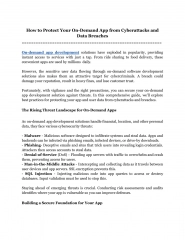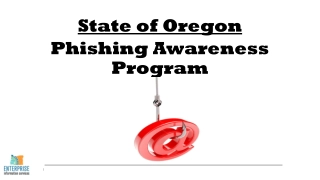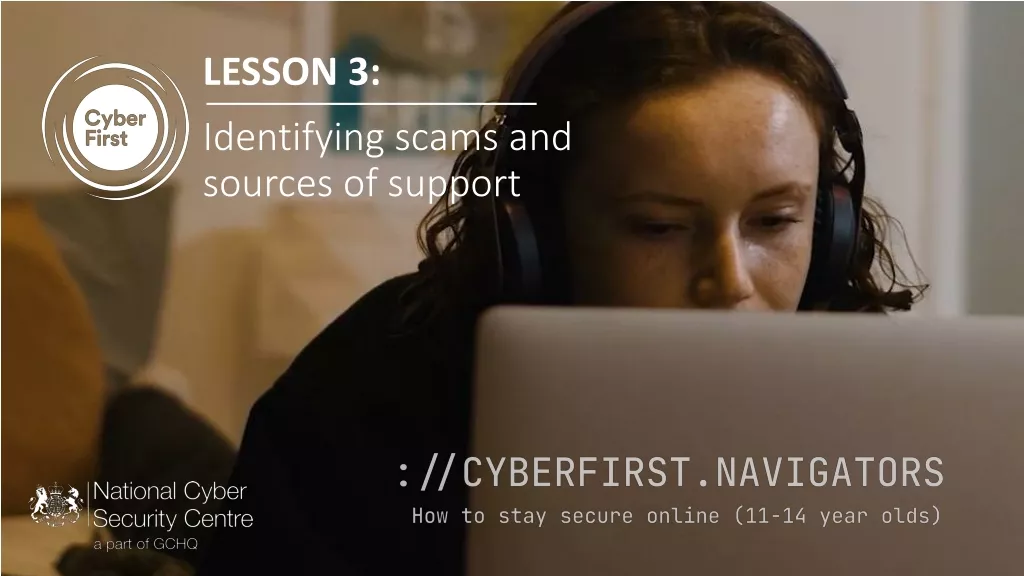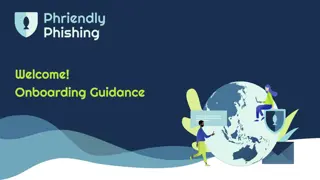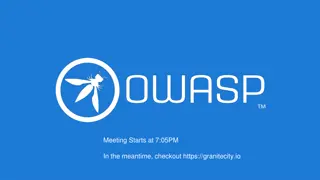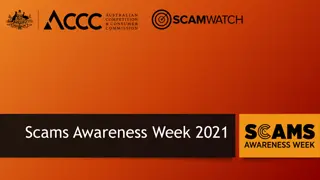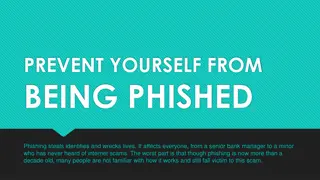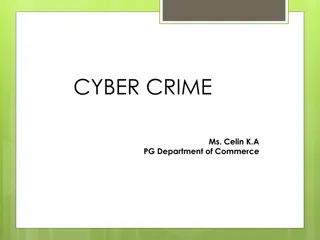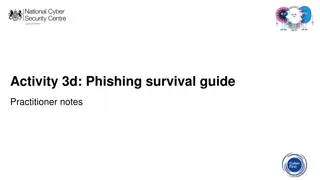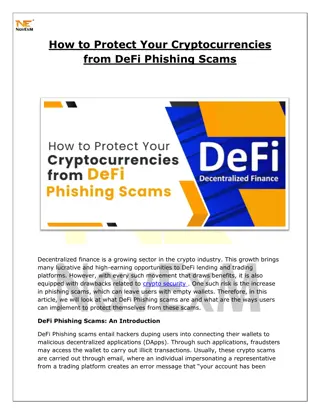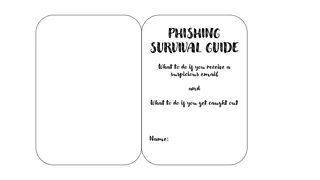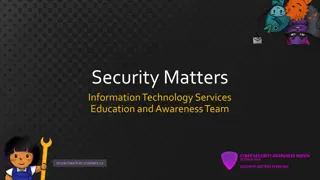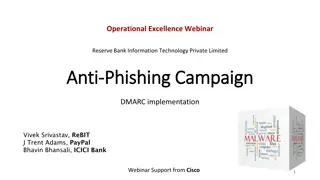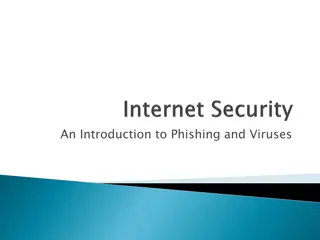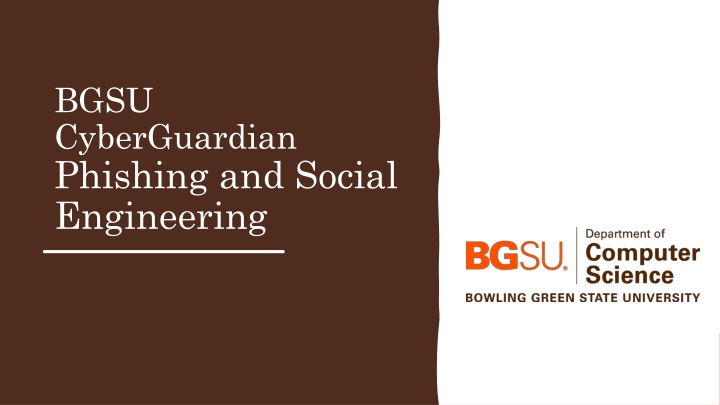
Preventing Cyber-Attacks: Phishing and Social Engineering Awareness
Learn how to prevent cyber-attacks by understanding phishing and social engineering. Discover common risks in security-sensitive web activities and how over 90% of cyber-attacks originate from social engineering tactics. Educate yourself to stop 90% of cyber-attacks and protect against the most common threat - phishing.
Download Presentation

Please find below an Image/Link to download the presentation.
The content on the website is provided AS IS for your information and personal use only. It may not be sold, licensed, or shared on other websites without obtaining consent from the author. If you encounter any issues during the download, it is possible that the publisher has removed the file from their server.
You are allowed to download the files provided on this website for personal or commercial use, subject to the condition that they are used lawfully. All files are the property of their respective owners.
The content on the website is provided AS IS for your information and personal use only. It may not be sold, licensed, or shared on other websites without obtaining consent from the author.
E N D
Presentation Transcript
BGSU CyberGuardian Phishing and Social Engineering
Web Activities Why do we browse Internet? email searching on social networking e-commerce driving directions reading watching 2
Security-sensitive Web Activities Common Risks Online shopping E-banking Managing confidential emails 3
Cyber-attacks and Social Engineering Cyber-attacks are happening every second of every minute of every hour of every day. No one will ever be immune to them. According to the FBI Internet Crime Report available at ic3.gov, Americans lost $12.5 billion to cybercrime in 2023. That is $40 per American. Over 90% of Cyber-attacks begin with Social Engineering 4
How to Stop 90% Cyber-Attacks? Over 90% of Cyber-attacks begin with Phishing https://youtu.be/Y7zNlEMDmI4 The Best Approach is to educate our people. Creating awareness of Cybersecurity, particularly Social Engineering, can stop 90% of Cyber-attacks. Can save 90% of losses due to Cyber-attacks. 5
Most Common Attack: Phishing The following video clip demonstrates Phishing: https://youtu.be/Y7zNlEMDmI4 6
Determining Phishing Messages You will see a series of screenshots in the following slides related to phishing For each one, decide whether you think it is a phishing email or not If you think it is a phishing email, explain why it might be a phishing email 8
Message #1 Answer: Phishing (Suspicious email address)
Message #2 Answer: Phishing (Suspicious email address and link)
Message #3 Answer: Non-Phishing
Message #4 Answer: Phishing (Suspicious email address and attachment content) 12
Message #5 Answer: Phishing (Suspicious email address and link)
Message #6 Answer: Non-Phishing
A Phishing Demo Watch a live demo of a phishing attack 15
Discussion Do you think two-factor authentication (phone verification for example) prevents attackers from logging into your account if you enter your credentials on a phishing website? What actions would you take after realizing that you entered your credentials on a phishing website?

